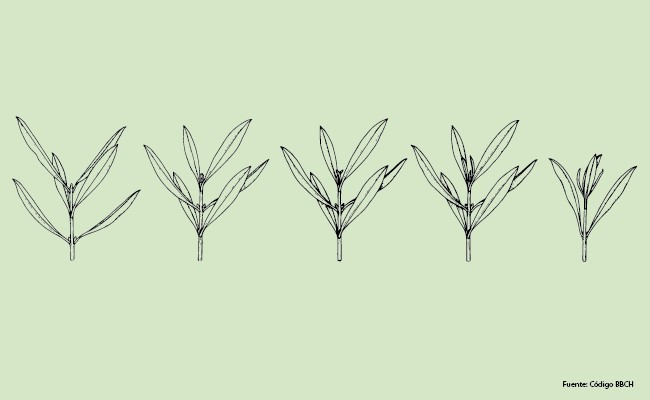Treatments for olive trees after winter

Treatments for olive trees after winter are widely recognized to prevent diseases and to obtain a homogenous harvest each season, thus forgetting the feared alternation of production. Preparatory treatments are applied at an early stage and aim to adapt the olive tree to achieve a good flowering.
The months of January and February are suitable to apply pruning work at the olive tree, allowing to set a proper structure within the production of the following campaign.
Although depending on climate and varieties, towards the end of March the flower buds have already begun to appear. In this second phase, the buds gradually thicken until the generation of the floral bud begins to be observed. Henceforth, the plant will continue its development with the formation of the cluster.
At this point, treatments for olive trees after winter recommend the use of products such as Kynetic4. Its use allows to enhance the flowering of the crop, an essential step to assure the harvest of the following year. Kynetic4 produces an energetic stimulation at times of increased crop demand. Its application contributes to obtain a better flowering and the following setting.
Treatments for olive trees: fungal diseases
At this stage of the harvest, it is utterly necessary to pay attention to the possible occurrence of fungal diseases such as repilo. Treatments for olive trees after winter also include the application of preventive products based on copper. The copper placed on the leaf creates a protective barrier that precludes the spore from germinating when it appears.
Due to its formulation, Glucosei minimizes the possible negative effects caused by the copper on the soil and stimulates the generation of self-defenses.
March results a time of the year when the latest winter rains and the earliest of the spring may become commonplace. The use of Glucosei also helps to ensure that crops are protected when spring budding occurs.
Micronutrient correctors
Specialists also recommend the application of a micronutrient corrector as a treatment for olive tres after winter. The plant assimilates them during the budding, overcoming any shortage of micronutrients that may occur and reinforcing the subsequent phase of flowering. Based on a combination of zinc, manganese, iron, boron and molybdenum, Seipafol Mix has been specifically designed to beat any shortage of micronutrients that may occur during the different stages of plant growth.
Not only does the use of natural solutions bring greater energy to the vegetable, but It also contributes to maintaining the balance of the agricultural ecosystem, respecting sustainability and revitalizing the environment. Thus, besides contributing to the development of the crop, natural treatments help to guarantee the conditions in which both olive trees and fields are left in proper conditions for future campaigns.

